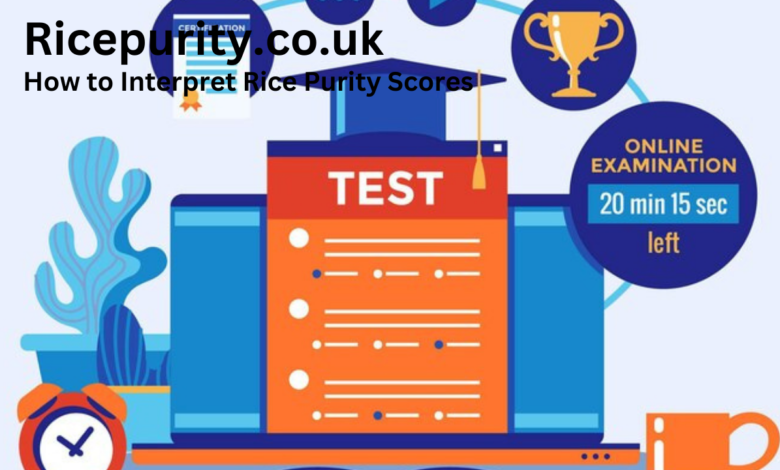
Personality tests have become incredibly popular in helping people understand themselves better. From the Myers-Briggs Type Indicator (MBTI) to the Big Five and Enneagram, personality tests are used for personal growth, career guidance, and even relationship building. But while taking these tests can be enlightening, understanding the scores can often be a bit confusing. What does each score mean, and how should you interpret the results?
In this article, we’ll dive into popular personality tests, what the scores represent, and how to use them for personal insight.
Why Take a Personality Test?
Personality tests are tools that provide insight into your characteristics, tendencies, and preferences. Here are some common reasons why people take these tests:
- Self-Discovery: Gain a deeper understanding of your strengths, challenges, and motivations.
- Career Guidance: Identify career paths that may be well-suited for your personality.
- Interpersonal Relationships: Learn more about how you communicate and interact with others.
- Personal Growth: Find ways to improve and develop your personality based on your results.
Popular Personality Tests and What Their Scores Mean
1. Myers-Briggs Type Indicator (MBTI)
The MBTI is a popular test based on Carl Jung’s theory of psychological types. It categorizes people into 16 personality types based on four dichotomies:
- Extraversion (E) vs. Introversion (I)
- Sensing (S) vs. Intuition (N)
- Thinking (T) vs. Feeling (F)
- Judging (J) vs. Perceiving (P)
Each combination of letters forms a unique personality type, like INFP, ESTJ, or ISFJ.
Interpreting MBTI Scores
Scores are often shown as percentages that indicate a preference for each of the dichotomies. For example, if you score 70% Introverted (I) and 30% Extraverted (E), it suggests a strong preference for introversion, though this doesn’t mean you can’t enjoy socializing. These scores highlight your dominant tendencies but are flexible and can evolve over time.
2. Big Five Personality Traits (OCEAN)
The Big Five test evaluates personality across five traits:
- Openness: Creativity and openness to new experiences.
- Conscientiousness: Level of organization and reliability.
- Extraversion: Sociability and assertiveness.
- Agreeableness: Compassion and cooperativeness.
- Neuroticism: Emotional stability.
Interpreting Big Five Scores
Each trait is measured on a continuum from low to high. For example, a high score in Openness may suggest creativity and a love for new experiences, while a lower score in Neuroticism indicates a more stable emotional outlook. Each of these traits offers insight into how you think, behave, and interact with others. There’s no “ideal” score—each has strengths and potential challenges.
3. Enneagram
The Enneagram categorizes people into nine types, each with its own core motivations, fears, and desires. Types range from Type 1 (The Perfectionist) to Type 9 (The Peacemaker), and each has unique strengths and challenges.
Interpreting Enneagram Scores
The Enneagram often shows a dominant type, or “core” type, alongside scores for other types, indicating your range of traits. Scores often reveal your “wings,” which are types adjacent to your primary type. For example, a Type 5 might have wings in Type 4 and Type 6, adding nuance to their personality traits. The score’s strength often correlates to how strongly you identify with certain behaviors and perspectives.
4. DISC Personality Assessment
The DISC test measures four traits:
- Dominance: Assertiveness and control.
- Influence: Sociability and communication.
- Steadiness: Patience and calmness.
- Conscientiousness: Precision and organization.
Interpreting DISC Scores
DISC scores indicate your tendency toward each of these traits. For example, someone with a high score in Dominance may be assertive and results-oriented, while a high Influence score suggests a social, outgoing nature. DISC scores are helpful in team-building and understanding how people approach tasks and relationships at work.
Tips for Interpreting and Using Personality Test Scores
1. Avoid Overgeneralization
Remember that personality test scores reflect tendencies rather than strict rules. For instance, a high Introversion score doesn’t mean you can’t enjoy social events—it simply suggests a preference for quieter, more introspective settings.
2. Consider Context and Flexibility
Personality can change over time, especially as you gain new experiences and adapt to different roles. Repeating tests after a significant period may reveal shifts in scores, offering fresh insights into your development.
3. Identify Areas for Growth
Personality tests can reveal areas where you may want to improve. For example, if your Conscientiousness score is low, you might focus on enhancing organizational skills to boost productivity.
4. Use Scores for Better Relationships
Understanding your personality and that of others can improve your relationships by providing insight into communication styles, conflict resolution strategies, and emotional needs.
Common Misconceptions About Personality Test Scores
- Fixed Traits: People often think of personality traits as permanent, but traits can change based on experiences, learning, and growth.
- Binary Scores: Personality scores are rarely absolute. You might lean towards Extraversion but still value quiet, reflective time. Interpret scores as points along a spectrum rather than definitive markers.
- Ideal Types: There’s no “best” personality type or ideal score. Each type and trait has its strengths, and diversity in personality brings value to workplaces, friendships, and communities.
Personality test scores can provide valuable insights into who you are, how you relate to others, and where you can grow. While no score or category can completely capture the complexities of your personality, these assessments can be useful tools for personal discovery and relationship building. By taking personality test scores as flexible and guiding tools rather than definitive labels, you can use them to enrich your life, career, and personal growth journey.



